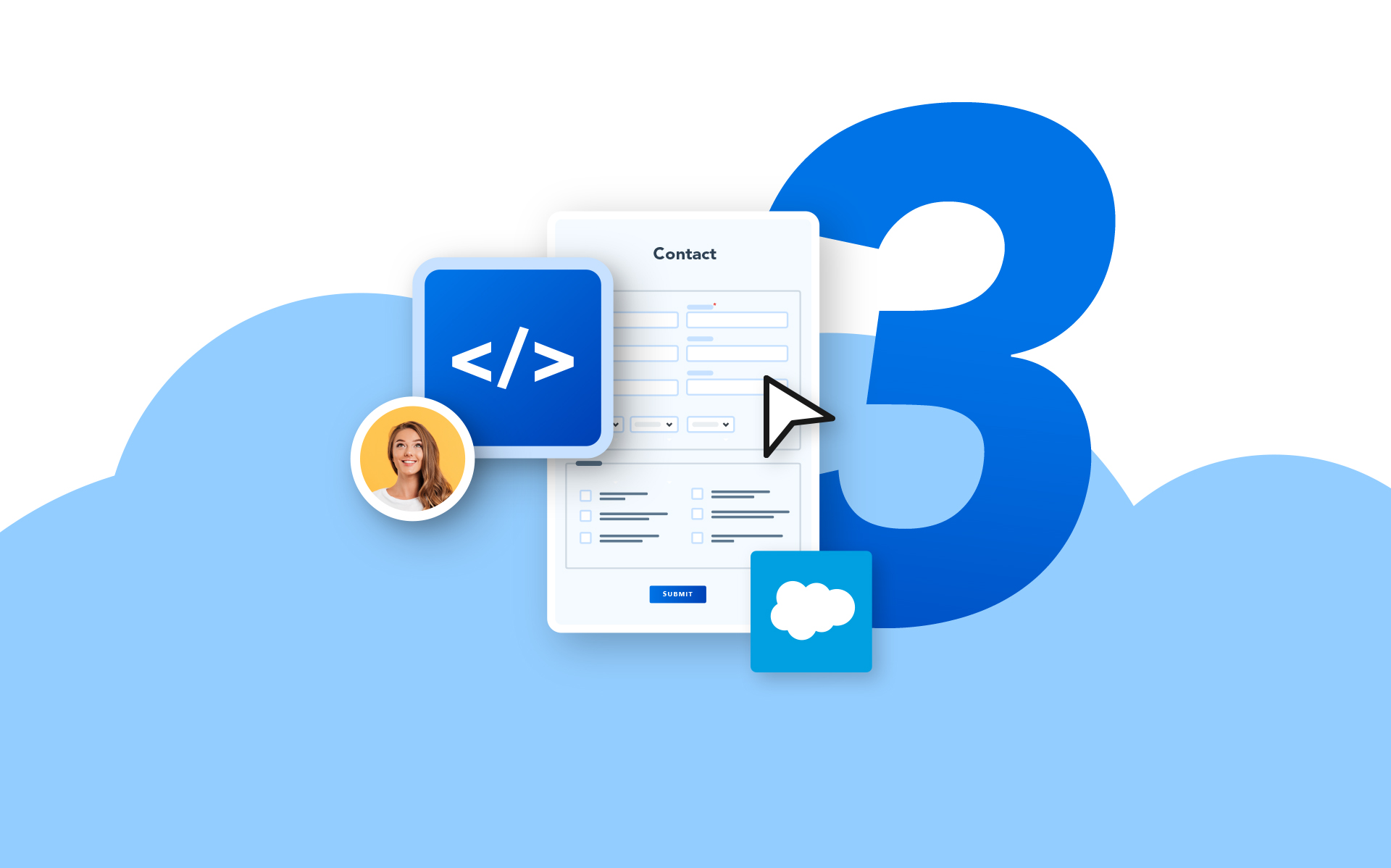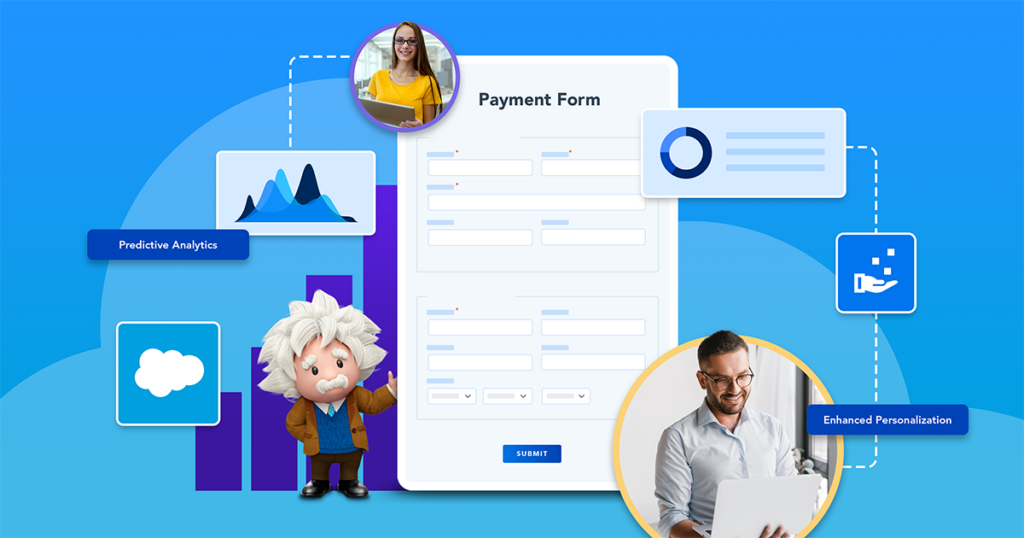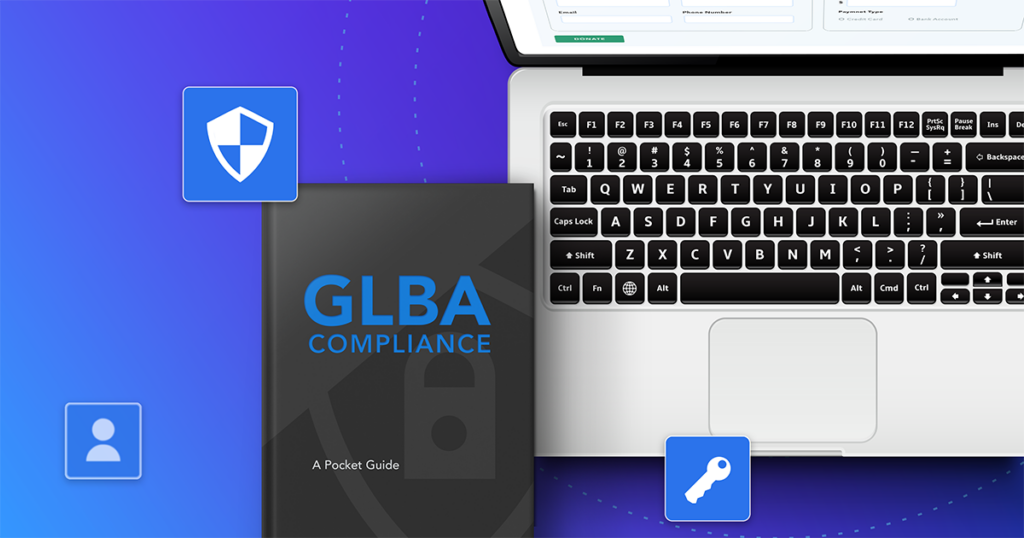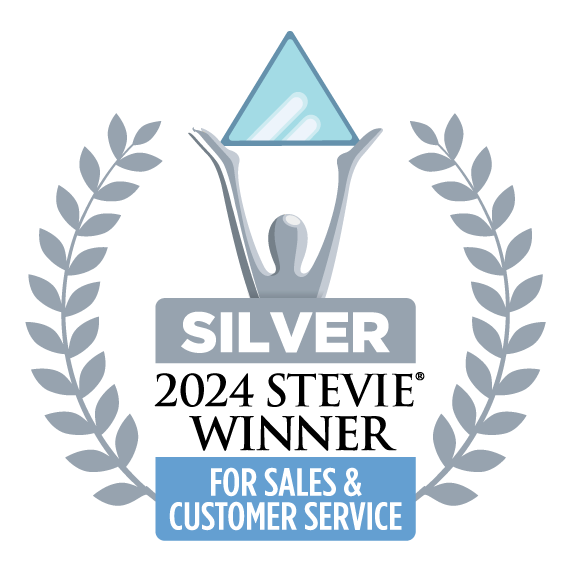If your organization relies on data, you need a way to efficiently collect this information and import it into a CRM like Salesforce. The best way to do this is with forms. When it comes to building your Salesforce forms, there are three options to consider.
You can choose to code a form from scratch using HTML and CSS, use Salesforce’s Web to Lead feature or implement a third-party data collection tool. It’s important to understand the benefits and limitations of each method, so you can choose the right form-building process for you.
HTML Forms
The most basic and accessible way to build a Salesforce form is with a markup language such as HTML. Using HTML and a styling language like CSS, you can create a web form that is fully customized to the type of data you want to collect and to your brand, including colors, fonts, and logos. HTML forms are a good option if you need to quickly build and launch a simple contact form or newsletter signup. In Salesforce, you can use HTML for form building through the Visualforce pages or Lightning components.
Tips
- Apply Salesforce Lightning Design System (SLDS) styles for a consistent look and feel.
- Test your form thoroughly, considering different scenarios and user inputs.
- Ensure your form is accessible to users with disabilities.
- Use semantic HTML and follow best practices for accessibility.
HTML forms can start to lose functionality when you have more complex requirements, including validations or calculations, error messages, and mobile responsiveness. Your HTML form will have to rely heavily on scripting languages such as JavaScript or PHP to accomplish these tasks.
The more complex the HTML form, the more you need a scripting language, and in turn, an experienced developer to build and maintain these forms. When you want to connect your web form to Salesforce, you’ll need to configure a form integration using custom development, APIs, or third-party tools.
A limitation of HTML forms is data security. If your organization has strict security, privacy, and compliance requirements, the forms you use to collect data will need to comply with these requirements as well. Sanitize user inputs to prevent security vulnerabilities such as cross-site scripting (XSS). Validate and sanitize inputs both on the client side (using JavaScript) and server-side (using Apex controllers). Beyond validating data input, providing data encryption in transit, or implementing custom-coded CAPTCHA, your HTML form may not meet the security requirements set by your organization.
Pros
- Free and compatible with all types of browsers
- Doesn’t require a platform or special interface to edit
- Fully customizable and easy-to-update simple forms
Cons
- Heavy reliance on developers for building and maintaining
- Challenging to code calculations, validations, and data pre-fill
- Dependence on scripting language and complex documentation
- Potential security, privacy, and compliance challenges
- Requires a third-party platform, APIs, or custom code to integrate with Salesforce
Salesforce Web-to-Lead Forms
For many Salesforce users, the CRM’s native Web-to-Lead feature is a useful option for collecting and importing new lead data. Web to Lead lets you create a custom HTML form that can be embedded in your website to create a new lead record in Salesforce anytime an individual submits the form.
Web-to-lead forms let you add and customize basic form fields for lead capture, such as name, phone, and email address. Since it is a native feature, you can set up internal lead routing for your sales team using Salesforce’s automation and workflow capabilities.
Web-to-Lead helps teams cut out manual data entry or CSV upload to Salesforce, saving time and resources during the lead generation process. In short, Web-to-Lead does exactly what it was designed to do: provide a way to easily build simple forms that automatically import data to Salesforce.
Salesforce Web-to-Lead forms are a native feature that allow you to create web forms, capture lead information, and automatically add it to your Salesforce database. Here’s a step-by-step guide on how to create Salesforce forms using Web-to-Lead:
Tips
- Ensure that the fields on your web form are correctly mapped to the corresponding fields in Salesforce.
- Implement validation rules in Salesforce to ensure that the data entered through the web form meets your organization’s standards.
Complex functionality or advanced security features with Web-to-Lead. Many customizations are not possible, including pre-fill, file uploads, and validation for phone or email fields. You’ll also be limited to Salesforce native integrations, which may bottleneck processes if your team relies on other tools.
If you need to capture sensitive personally identifiable information (PII), Web-to-Lead does not comply with the security standards for all industries to keep data safe and confidential. Without any validation options, spam submissions and incomplete data can compromise the integrity of your Salesforce records.
Pros
- Quickly build and customize simple lead generation
- Native Salesforce forms that automatically import data
- Improve lead quality and automate lead management
- Salesforce Web-to-Lead forms automatically include a CAPTCHA to prevent spam submissions.
Cons
- Outdated form-building interface with no drag-and-drop functionality
- Minimal form customization options, limited field validations, and risk for spam or duplicate records
- Inability to offer complex form functionality beyond lead generation
- Reliance on Salesforce expert to setup and manage third-party tools
- Limited integration capabilities outside the Salesforce platform
Third-Party Form Builder
A third-party form builder will provide you with more customization for your web form building than HTML forms or Web-to-Lead. You’ll have the flexibility to choose a tool that best suits your data collection goals and specific form needs.
A data collection tool often has a free option as well as different pricing tiers that offer additional features. They will generally give you access to a form builder and basic integrations. Using a data collection tool, you can build and launch simple forms, such as surveys, newsletter signups, contact forms, and more.
Depending on the form-building tool you select, you may have the option to publish to different outputs and integrate with other applications.
Depending on the tool, a more simple form builder with basic integrations might not offer the security, scalability, or flexibility to meet the comprehensive or more advanced data collection needs of your organization. Functionality can break down as you attempt to build and automate complex processes that need to meet security and privacy requirements.
For requirements beyond the basic functionality of a lightweight form-building tool, IT and development resources can build custom workarounds.
Pros:
- Design, build, and integrate multiple types of web forms
- Improve data collection processes and reduce manual work
- Boost team productivity and efficiency
Cons:
- Can have shallow integrations
- Possible scalability challenges
- Limitations for advanced data collection workflows
- Lack of functionality for building complex web forms
- May lack security, privacy, and compliance certifications
- Reliance on IT or developers to build and maintain
- Can lack reporting and analytics tools
The Ideal Solution: A Data Collection Platform
You may be able to rely on basic HTML forms, simple native web-to-lead forms, or third-party form-building tools to create and manage your web forms. But as your organization expands and requires greater functionality and security from a data collection tool, you’ll run the risk of bottlenecking processes, creating more manual work, and falling into noncompliance.
A data collection provider is your partner in collecting, securing, and managing your organization’s valuable and confidential data. When selecting a solution, look beyond basic form building to what your organization requires to securely collect, connect, and protect data. In short, you’ll benefit by choosing a data collection platform.
A data collection platform offers more than the function of creating Salesforce forms or surveys for your organization. It provides a range of functionalities that enable your entire organization to move more efficiently through its operations. Prioritize user experience and intuitive interface design that requires a minimal learning curve when considering a data collection platform.
A data collection platform addresses three key areas:
- Collecting your data: A data collection platform goes beyond basic form building and allows you to gather the most sensitive data, including contact details, health, and financial information.
- Connecting your data: A data collection platform seamlessly integrates with business-critical software and your system of record (CRM) to ensure data is consistent, accurate, and usable.
- Protecting your data: A data collection platform combines advanced privacy and security features with full regulatory compliance to protect your data starting at the point of collection.
FormAssembly: The Trusted Solution for Data Collection
FormAssembly is the secure data collection platform that enables organizations of every size to collect and process data with high-performing Salesforce forms. FormAssembly combines powerful functionality with robust security and ease of use.
With help from the FormAssembly Data Collection Platform, you can easily collect, connect, and protect data with a no-code web form builder, powerful integrations, and security features. Together, the features of our platform and web form security best practices can help secure the sensitive data your organization collects.
Find a partner to help you overcome your biggest data collection challenges. See FormAssembly in action in this on-demand webinar.



